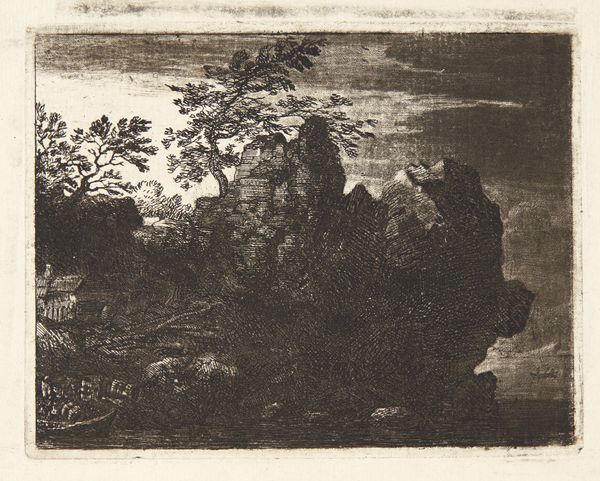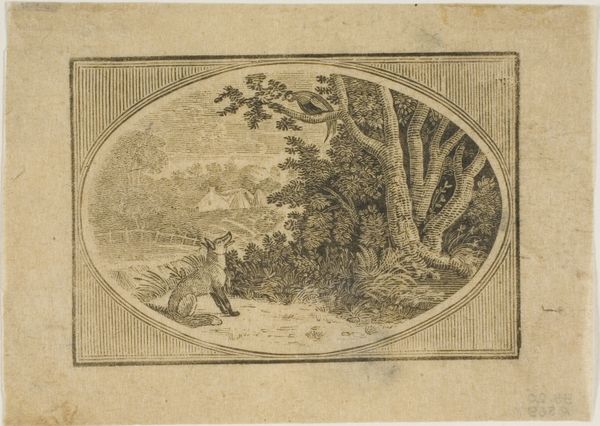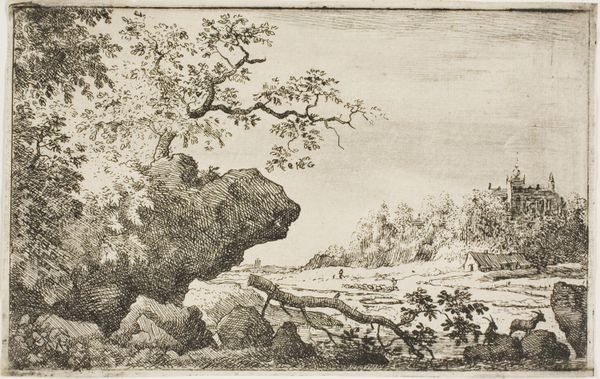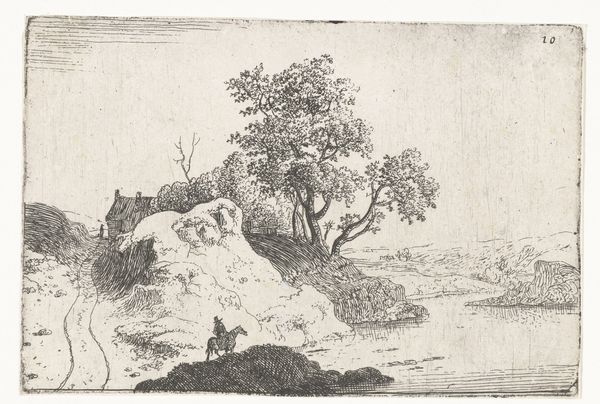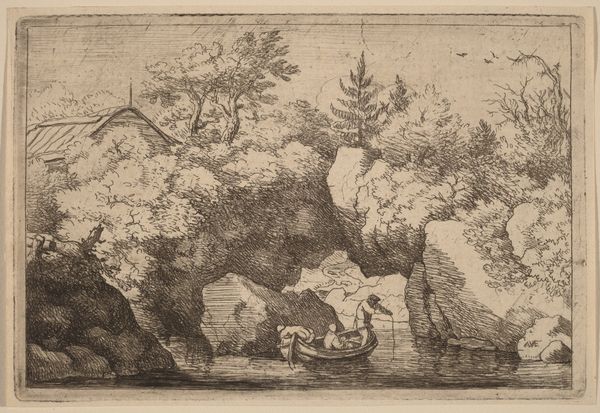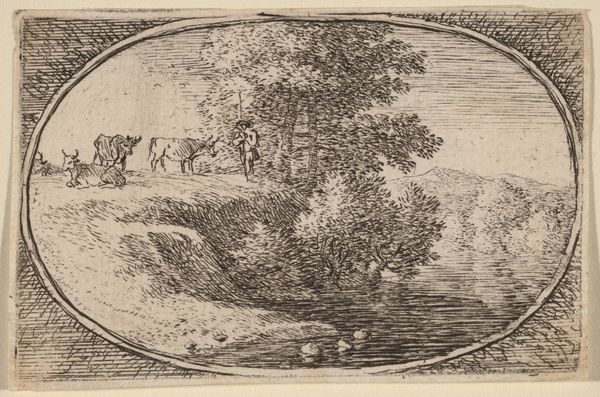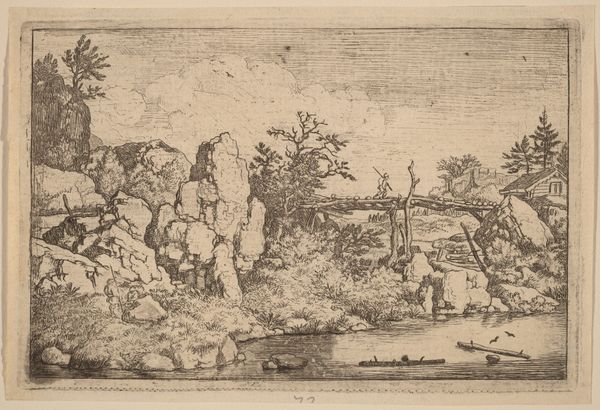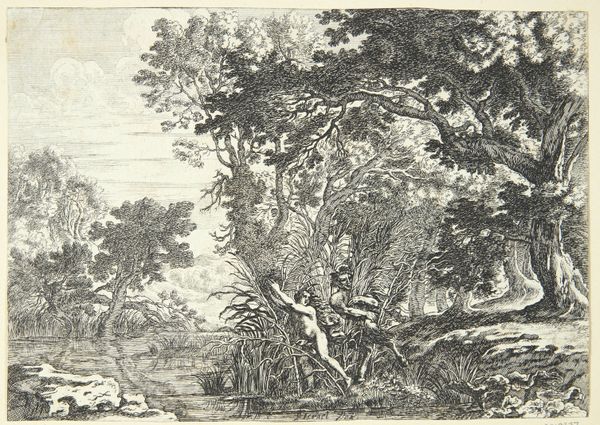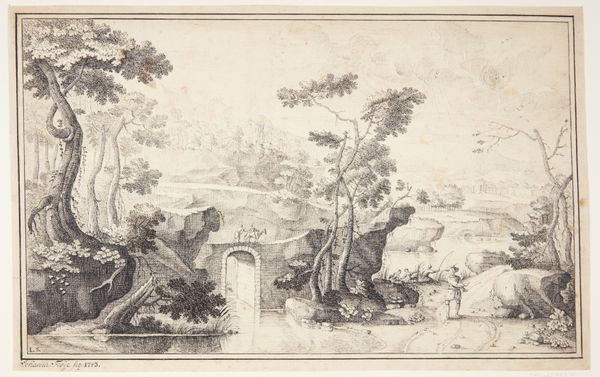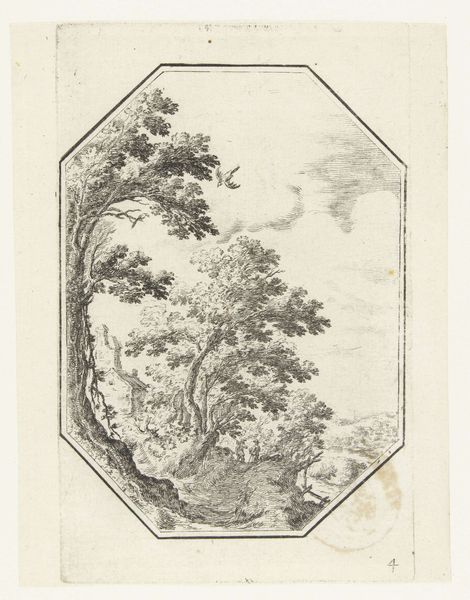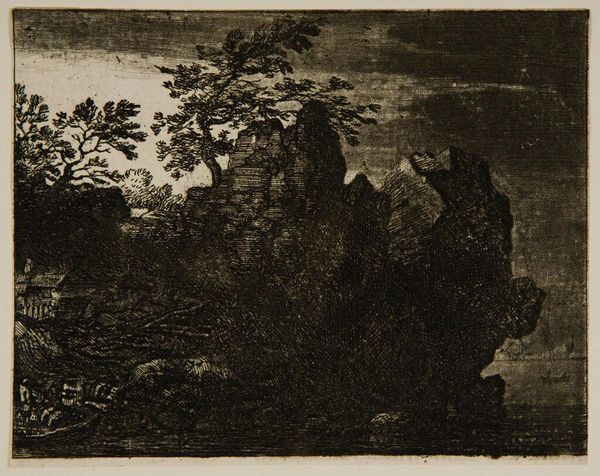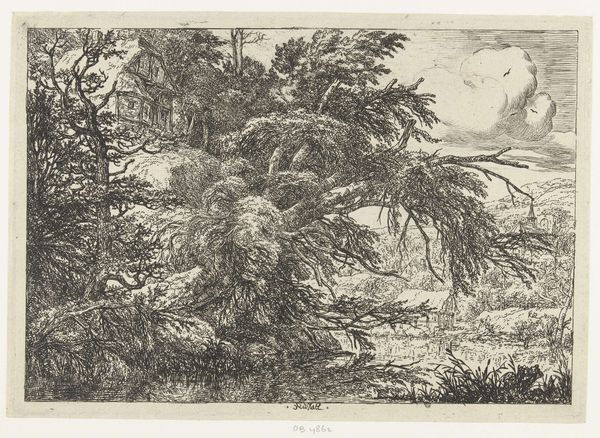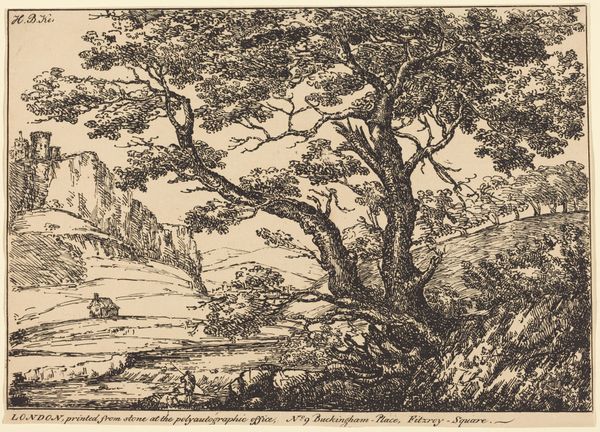
print, etching
#
dutch-golden-age
# print
#
etching
#
landscape
Dimensions: 105 mm (height) x 133 mm (width) (plademaal)
Editor: This etching, "Klippeparti ved en kyst" by Allaert van Everdingen, likely made sometime between 1621 and 1675, presents a striking coastal landscape. I'm immediately drawn to the contrast between the densely worked rocks and the relatively empty sky. What elements of the composition stand out to you? Curator: The graphic weight is heavily biased towards the lower half, establishing a powerful foundational structure, no? Observe the rock face: its rugged texture commands attention. Consider also the distribution of light and dark, note how Everdingen used hatching to articulate volume. Does the calculated placement of tonal variation around the edges create a deliberate flattening of depth? Editor: I see what you mean about the hatching defining the rock's volume. It's interesting how the detail kind of fades away at the top, as if to push the rock forward in the composition. Do you think the details included say anything about Everdingen's choices? Curator: The specificity of those details, such as the individuals in the boat and the careful arrangement of vegetation atop the craggy precipice, serve as anchoring points. They invite the viewer into the broader panorama. Ask yourself this: What does the conscious limitation of scope by the artist provoke in the perceptive audience? Editor: Perhaps that constraint intensifies the focus on the details presented. I was not prepared to look at landscape with these structural ideas. Curator: And how does apprehending these organizational choices affect the reading of "Klippeparti ved en kyst"? Editor: I'm recognizing that a landscape is less about geographical accuracy and more about Everdingen's choices in shaping the perspective. Thanks for that insightful breakdown!
Comments
No comments
Be the first to comment and join the conversation on the ultimate creative platform.
